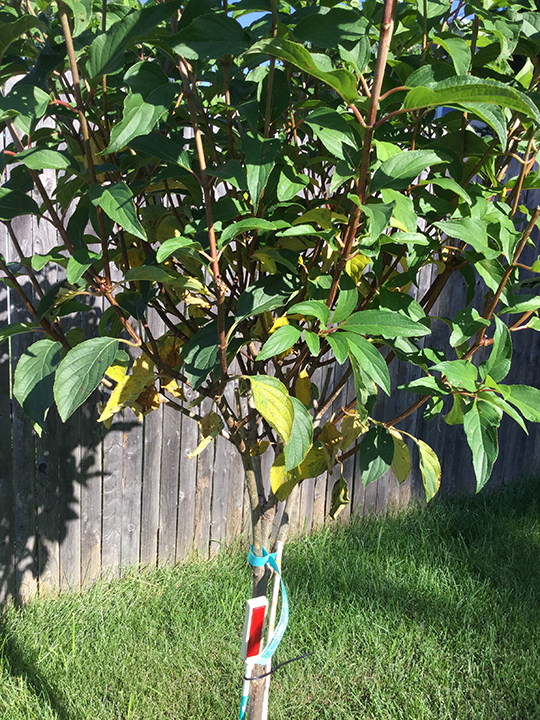Fascination About Hydrangea Leaves Turning Yellow
Some Known Incorrect Statements About Hydrangea Leaves Turning Yellow
Table of ContentsHydrangea Leaves Turning Yellow Can Be Fun For AnyoneHydrangea Leaves Turning Yellow - The FactsNot known Facts About Hydrangea Leaves Turning YellowHydrangea Leaves Turning Yellow - An OverviewThe 9-Minute Rule for Hydrangea Leaves Turning YellowHydrangea Leaves Turning Yellow Things To Know Before You Buy
One possibility is that the plant is not getting sufficient sunshine. During the winter season months, the days are shorter, and the sun is not as extreme, so make certain to position your Hydrangea in a spot where it will certainly obtain at least six hours of sunlight daily. Another reason for Hydrangea yellow leaves in wintertime can be as well much water.Finally, the fallen leaves could be transforming yellow due to temperature level stress. Hydrangeas like cooler temperatures, so if the plant remains in an area that gets also hot or as well cold, the leaves will certainly transform yellow. If you assume temperature level stress and anxiety may be the concern, try relocating your Hydrangea to a various location or safeguarding it from the aspects with a burlap wrap.
New growth will be observed in early springtime, when you'll notice eco-friendly foliage sprouting from stems that might have shown up dead. If your leaves are turning brownish in spring or summer, there are likely various other variables at play (Hydrangea Leaves Turning Yellow). The accurate factors rely on the variety and their growing conditions, however generally, brownish hydrangea leaves are a sign of dehydration and wilting in the warmth
Hydrangea Leaves Turning Yellow - Truths

Wilting is triggered by lack of dampness, indicating there are a few great tricks to use to avoid this from occurring. Provide your hydrangeas a healthy glug of water every couple of days when the temperatures are climbing up high, and deal with the dirt to better keep moisture. After sprinkling, a dab of mulch around the base of each plant should assist with this by keeping dampness in the soil.
This interferes with fungis spores from resolving. "The Botrytis fungus grows in amazing and wet conditions, so avoid bathing the entire plant when sprinkling and just water at the roots," shares Roy Nicol, a Master Horticulturist. If you've missed the possibility for avoidance and try this out are handling an infection you ought to remove all dead or badly infected fallen leaves from the plant and ruin them to avoid further spread.
The Only Guide to Hydrangea Leaves Turning Yellow
As a general general rule, we suggest getting rid of fallen leaves when they are 50% brown or higher. While browning triggered by any reason can't be reversed, taking the corrective activity explained above will motivate the plant to expand brand-new leaves so the harmed fallen leaves either drop off naturally or can be removed by the garden enthusiast.
Hydrangeas need to be sprinkled just when the leading couple of inches of dirt are dry, and must be offered a thorough soaking each time. Underwatered hydrangeas are most likely to have yellow, wilting, and drooping leaves.
The method you deal with hydrangea leaves transforming yellow depends on the key issue causing the yellow leaves. This can be difficult to identify, yet once you do you will be able to readjust your plant treatment accordingly to deal with the trouble. As stated previously, a typical issue with hydrangeas is vitamins and mineral shortages.
Fascination About Hydrangea Leaves Turning Yellow
During the height growing season, you should sprinkle at a rate of concerning 1 inch per week. If you are bothered with not effectively watering your hydrangeas, there are a number of things you can do. Including compost to the base of the plants over the origin area help to regulate the temperature level around the hedge and retain water in the soil.
You can purchase and mount straightforward watering worlds. Watering worlds hold water in them and slowly release this water right into the soil as the ground comes to be completely dry. Simply fill up the globe with water, stick the spout into the dirt within the origin zone near the base of the plant, and leave it in place till all the water is gone.
If it is also severe, some plants will never recuperate from transplant shock and will proceed to decline up until they die. Decrease transplant shock by including as numerous roots as possible when excavating up your plant to relocate it. Make certain to provide more water than common in the weeks adhering to growing to help Discover More Here your plant recoup and expand new roots.
Things about Hydrangea Leaves Turning Yellow
To prevent spreading fungal illness, make certain to thouroughly clean and decontaminate any kind of pruning devices prior to and after usage. Finally, you can try to flush the roots with water to remove excess fertlizer.
Your hydrangea plant likes well-drained, wet dirt. If the pot has bad drainage, or your dirt is swamped, the fallen leaves will start to turn yellow. Overwatering makes the dirt soaked (Hydrangea Leaves Turning Yellow). Swamped and soaked soil can result in stunted growth, leaf staining, and, worst of all, rot fungal conditions. Despite the fact that over-watering can be damaging, under-watering is not an alternative either.
If you do not water your hydrangea plant for even more than a week, the leaves will certainly begin transforming yellow. Fungal diseases that attack the plants often Home Page tend to reveal indicators on the roots and the fallen leaves of the plant.